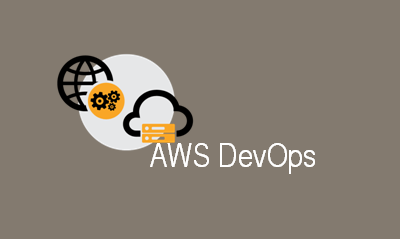Our Institute offers Online AWS DevOps Training by Experts, Learn AWS DevOps Certification Training with Course Material, Attend Demo for free & you will find spiritsofts is the best Institute within reasonable fee
The Training in AWS DevOps is every thing we explained based on real time scenarios,it works which we do in companies.
Experts Training sessions will absolutely help you to get in-depth knowledge on the subject.
Key FeaturesCourse ContentFAQs
- 40 hours of Instructor Training Classes
- Lifetime Access to Recorded Sessions
- Real World use cases and Scenarios
- 24/7 Support
- Practical Approach
- Expert & Certified Trainers
What is AWS technology
- Amazon Web Services is one of the best cloud computing platforms that is provided by Amazon. The Amazon Web services are sometimes called as Cloud services or remote computing services. They have launched their operations in the year 2006 for simple websites and client-side application and eventually has grown to a completely new level.
Basics of AWS Devops Architect
- Within this course, an individual will gain a lot of exposure towards developing, administrating and architecting different AWS cloud solutions. Using these techniques one can manage, develop and deploy cloud-based solutions on AWS platform. A variety of tools or process are used within this process some of them can be :
- EC2, EBS, ELB, S3, KMS, RDS, Snowball, DynamoDB etc.
- This course is designed in such a way that an individual will be able to build the necessary core skills in AWS platform. With this course exposure, one will understand and be expose towards different AWS terminology concepts, secure measures incorporated in AWS etc.
- The individual will be exposed to the industry best practices while architecting a cloud-based solution. During this program, the individual will get enough work experience that is necessary to proceed in AWS.
Cloud technology implementation
- The term cloud computing or cloud technology go hand in hand. In today’s world, most of the companies are utilizing virtual machines, storage of an application over the cloud rather than maintaining physically. Thus reducing the efforts on maintenance and operations activities and cost associated with it.
- It is as good as using electricity and paying for what you have used so far.
- With Cloud technology Implementation, the following benefits have been noticed:
- Self-service provisioning: This means that we don’t need to have IT administrators as a resource to support any of the activities.
- Elasticity: As discussed earlier, you can just use how much amount of storage is required and you will end up paying for the same. Thus the traditional way of taking up a certain space is not at all necessary and it reduces the overall cost.
- Pay per use: This is one of the best features of using cloud technology and one has to pay for what they have used in terms of the resources.
- Migration flexibility: Data migration has been more flexible these days as most of the cloud service providers have started building migration tools so that it will be helpful for their customers
Practical sessions on Devops technology
- The DevOps technology has revolutionized few of the activities and helping a lot of individuals to streamline their activities. This process has definitely helped the individuals to make sure that their deployment, post-production activities are taken care of in a standard way.
- During this course, one will get exposed to various lab sessions so that the individual will get enough exposure towards the real time scenarios and also can mimic the practical implementation sessions. Thus making the experience real time which helps the individuals to gain more knowledge in lesser time.
Fault tolerant systems and their usefulness
- The fault tolerant systems are built on a primary purpose where the primary system would intact without any outage during the fault situations. During this condition, the system should be working to a satisfactory level.
- Within the fault-tolerant systems the term recovery from error is considered in two ways, they are:
- Roll Forward
- Rollback
- If the system has gone to a stage where something is not working appropriately then it goes to a previous stable point using the checkpoints.
- The benefits of using the fault tolerant systems are:
- It helps the primary systems to be intact and can be working smoothly without any problem even in case of errors. Thus reducing the downtime associated with the systems.
- Helps you to move to a stable point, i.e. rollback or roll forward based on the requirement.
